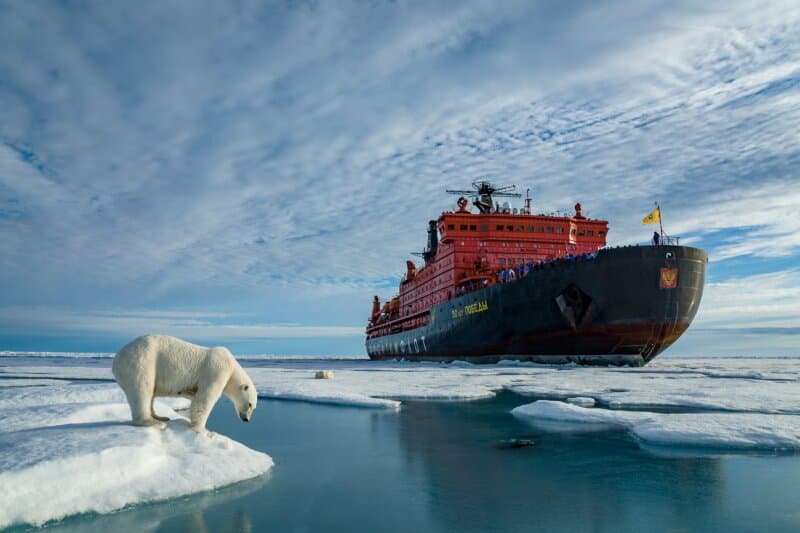
While on a fishing trip in the Arctic, a ship’s crew witnessed an uncommon sight: a polar bear swimming towards them. The bear was not in close proximity to any large ice formations, causing concern for the crew, who became even more alarmed when it began to follow their boat.
Aware that polar bears typically steer clear of humans and prefer to be alone, the crew understood that they needed to take action. Acting quickly, they lowered a rescue vessel to get a closer look and prepared for a potentially hazardous and uncertain encounter.
Keeping an Eye on It
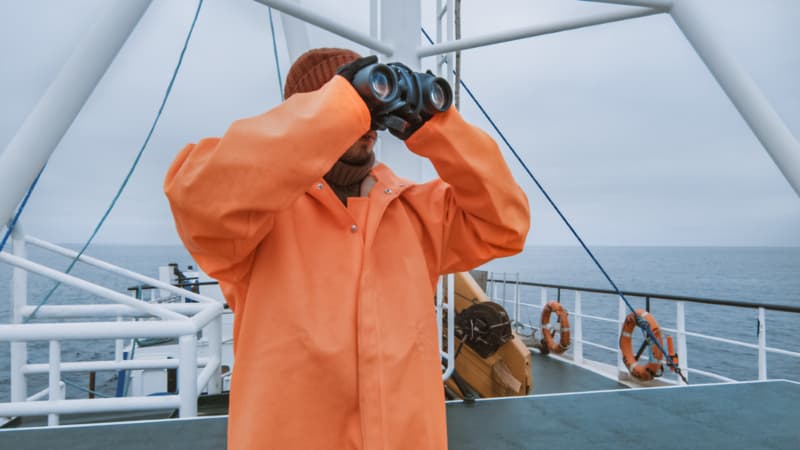
They knew the risks they were taking, but they were sure the boat would be too high for it to jump on.
That reason alone made half of the crew less worried, though that didn’t mean their nervousness would completely disappear.
There didn’t seem to be ice that could support the animal’s weight in their general proximity either, and, well… They couldn’t just let it drown!
Polar Bear climbed on
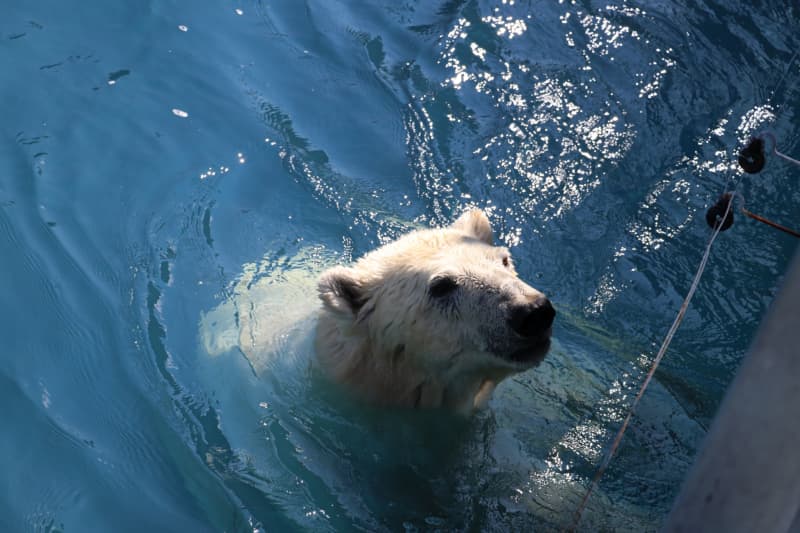
When the lifeboat hit the water, the bear let out a soft roar as its strong paws and claws hauled it onto the lifeboat.
“Luckily, that one can’t deflate,” Richard, one of the crew members, murmured, and a few other members laughed at the remark.
The captain, Captain Reynolds, walked over to the edge, coming face to face with the polar bear.
What could be wrong?

The animal stood on its hind legs, looking up at Captain Reynolds and the crew as it let out another, though now more prominent, roar.
The captain’s brow furrowed, “What is it doing?” He asked, but his crew remained silent, mesmerized by the animal in the boat under them.
What could possibly be wrong with it?
Stopping the Ship

The polar bear just kept making sounds, though its roars weren’t as loud. They stayed on course, but as they kept moving west the polar bear became more frantic.
“Halt the ship,” Captain Reynolds ordered and it didn’t take long for it to do so. Then, suddenly, the bear did something they hadn’t expected.
Polar Bear Jumped Back In
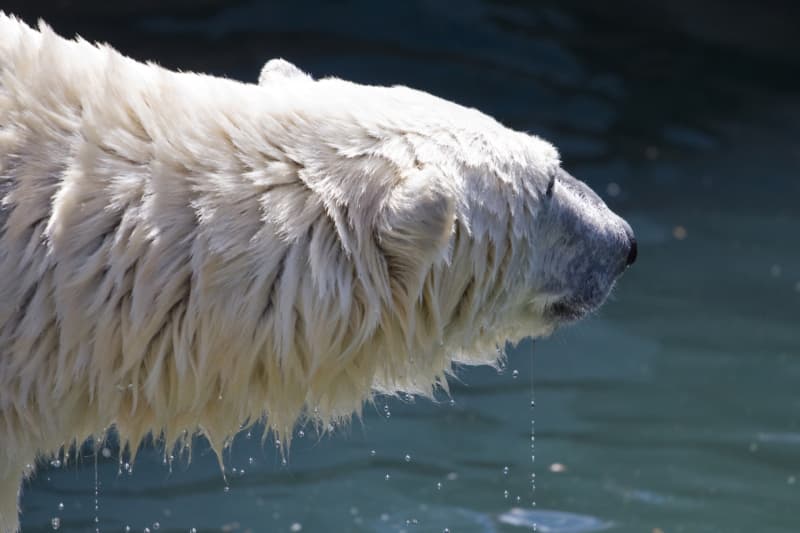
It jumped back into the water. Going the direction of which they came. This was certainly something strange. They thought to have saved the animal, but now the animal was leaving them again.
Maybe it had needed a little respite from all its swimming. Regardless, Captain Reynolds felt like he was missing something as he kept a close eye on the animal.
Very strange behavior
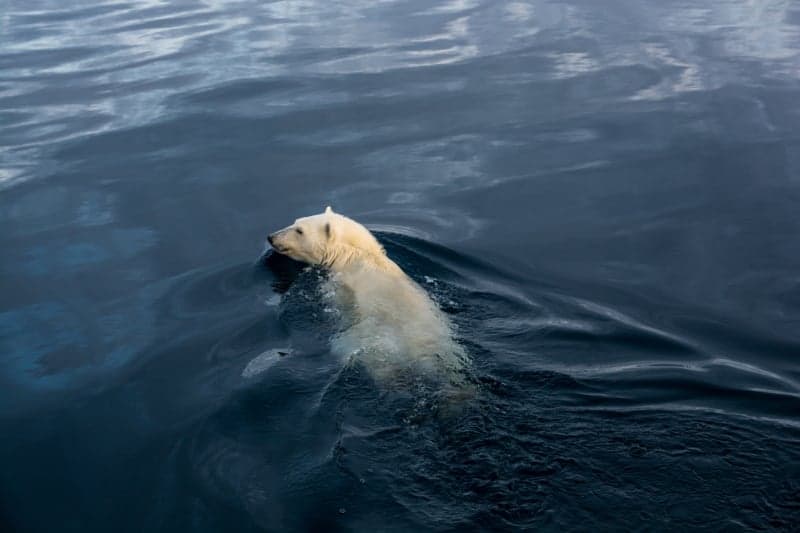
While most of his crew returned to their posts, he kept watching the animal, but instead of swimming away from the boat it suddenly stopped.
This piqued Reynold’s interest. What the hell was this animal doing? It turned slightly, it’s head facing the ship again as it let out another loud roar before swimming back to the raft on the water.
Maybe it was hungry?
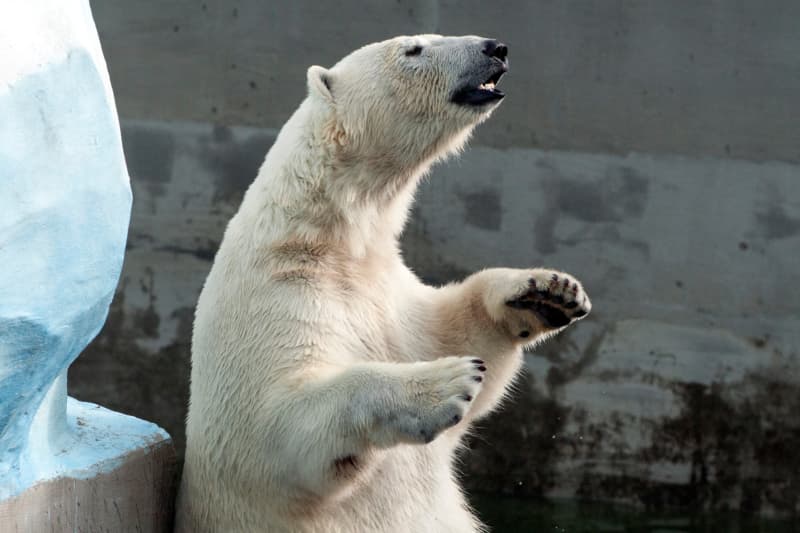
It climbed on yet again, standing on its hind legs. Was it merely hungry? Did it view him or any of his other crew members as food?
If it was hungry, maybe he could throw it a few of the fish they had caught. They had met the quota already; if this animal was this desperate, it wouldn’t be that much trouble.
Captain Reynolds quickly made his way to the storage.
Getting it some fish

Reynolds made his way into the “ice box” the name they had given the storage room for the fish they had caught over the past few days.
He grabbed a rather large specimen and walked back to the side of the boat. He knew the polar bear would still be there with the sounds it was making.
However, as Captain Reynolds threw the fish at the animal, it did something unexpected.
It didn’t eat it
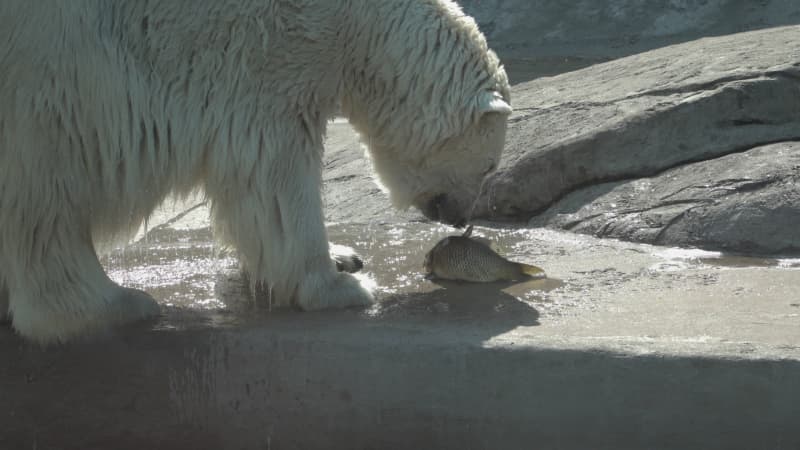
It didn’t do anything! It gave the fish a sideway glance, even sniffed it, but after doing so stood back up on its hind legs and roared once more.
Captain Reynolds’ brow furrowed. If it wasn’t hungry than what did the bear even want? It frustrated the Captain as he wanted to help the magnificent creature, but he was wise enough to not come any closer.
He didn’t have a death wish after all.
What did it want?
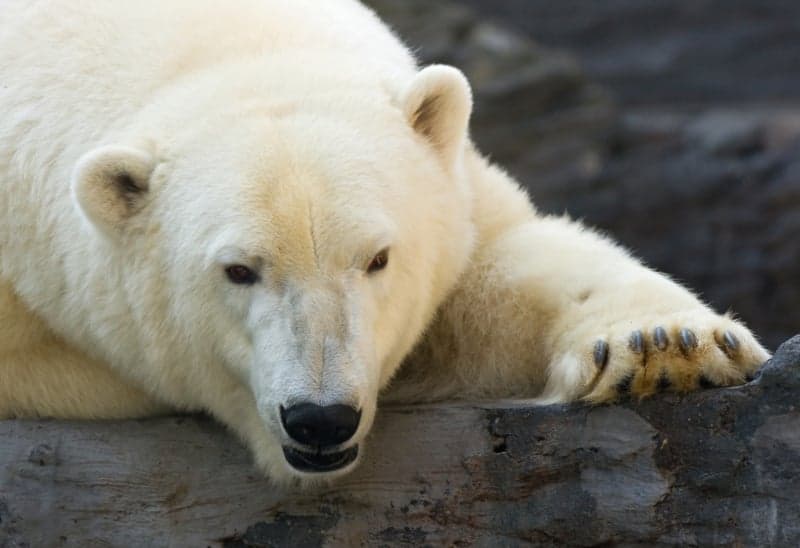
In their staredown, the polar bear suddenly seemed to change tactics as it began pawing at the side of the ship.
First, its paws scraped against the side of the metallic ship, a sound that was mildly annoying, to say the least, but that soon turned into something along the lines of banging.
What did this animal want? Captain Reynolds knew he had to figure it out.
Calling one of his crewsmen
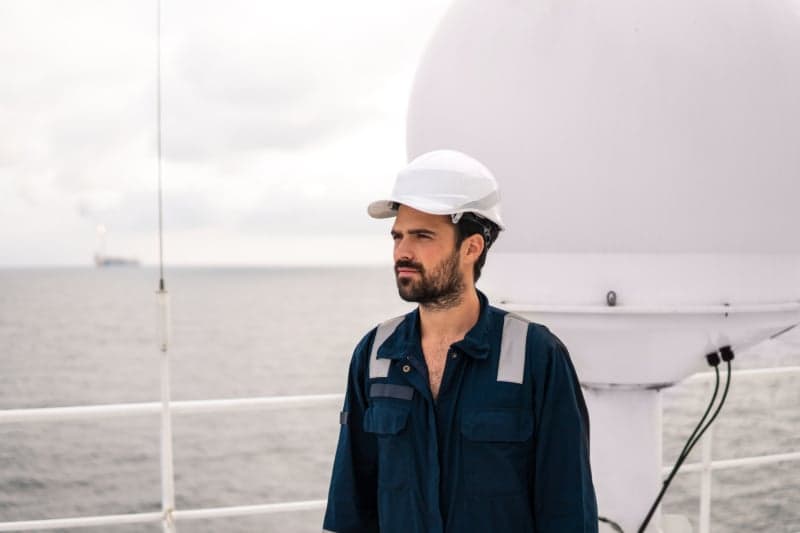
“Steward,” Captain Reynolds exclaimed as one of his crew members stepped forward, looking wearily at the polar bear that was only 12 feet below them.
“Yes, Captain. What can I do for you?” he asked one eye on the captain and one on the polar bear.
It seemed like not everyone was as enamored with the bear as the captain.
He needed a radio
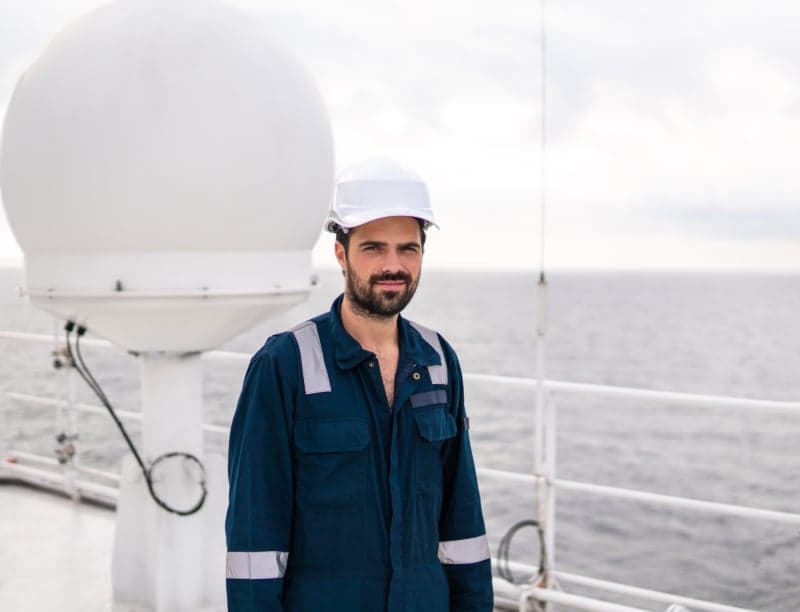
“Get me the radio, will you? Either that or stay with the bear and keep a close eye on him to report back to me its behavior.
We need to establish what it wants.” Captain Reynolds said, and he saw Steward pale. “I…– I will get the radio, Sir.”
He said as he tried to hold back his stammer but failed as he quickly scurried off to fetch the radio before the Captain changed his mind.
Wanting to communicate with professionals

Captain Reynolds waited for Steward to return as he kept looking at the polar bear, which was now pacing around on the raft.
The animal even hit the water with its paw; was it telling them where to go? The captain simply couldn’t wrap his head around it.
He had known a bit about polar bears as they used to be his favorite animal when he was younger, but he had never read or heard anything about similar behavior to this…
He was hopeful
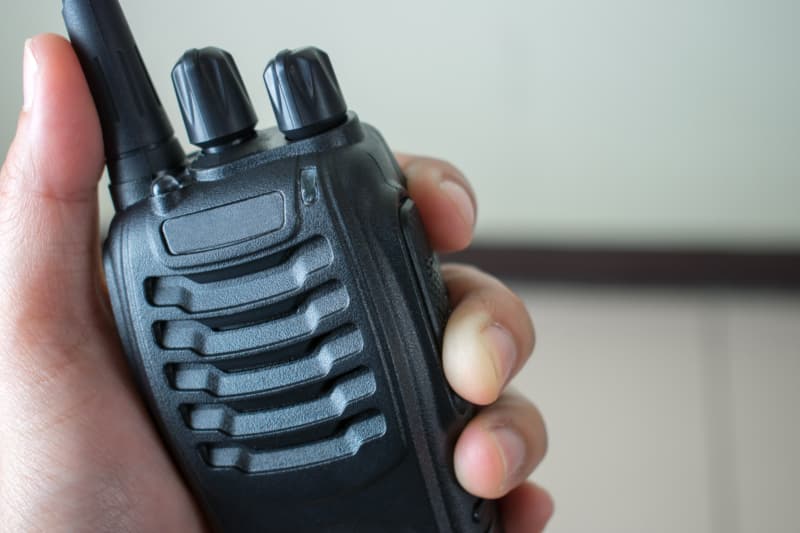
Luckily, Steward was swift and came back with a radio short after he had requested it. This radio would be sure to help him.
Not only were they able to use it to communicate with other ships that could possibly help them when they were in need, but the captain knew that there were ships out there that might know a bit more about the predicament they were in.
Calling other ships

He turned on the radio before speaking into it. “This is Captain Reynolds from The Amberjack in dire need of expertise for a polar bear situation.
Over.” He said, hoping that a ship with some possible scientists would hear his plea and help him out. He was hopeful that they would know what this behavior would possibly mean.
Urgent Plea Over the Waves
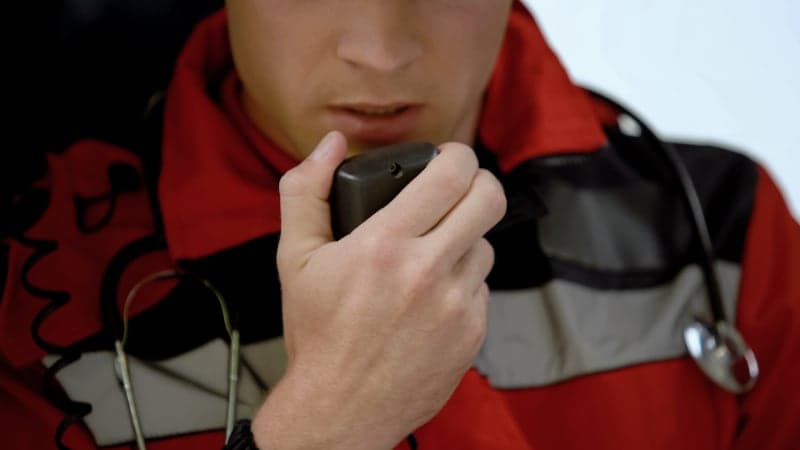
In the vast, icy expanse of the Arctic, Captain Reynolds’ voice crackled over the radio waves, sending an urgent plea.
“This is The Amberjack, requesting assistance for a peculiar polar bear situation,” he announced. His voice, tinged with concern, echoed in the barren Arctic, reaching out for any help in deciphering the bear’s strange behavior.
A Swift Response

Miles away, on the research vessel Arctic Explorer, Dr. Lena Morgan and her team of scientists perked up at the transmission.
“This could be significant,” she murmured, adjusting her glasses. They quickly acknowledged the call, their curiosity piqued by the mention of a polar bear behaving unusually, wondering what secrets it might hold.
Curiosity and Concern

“A polar bear acting out of the ordinary?” Dr. Morgan pondered aloud. Her team, a blend of animal behavior specialists and Arctic researchers, gathered around, discussing potential reasons.
“Could be stress-related, or perhaps it’s encountered something unusual in its environment,” suggested one of the younger researchers, eyes alight with curiosity and concern.
Preparation for a Meeting
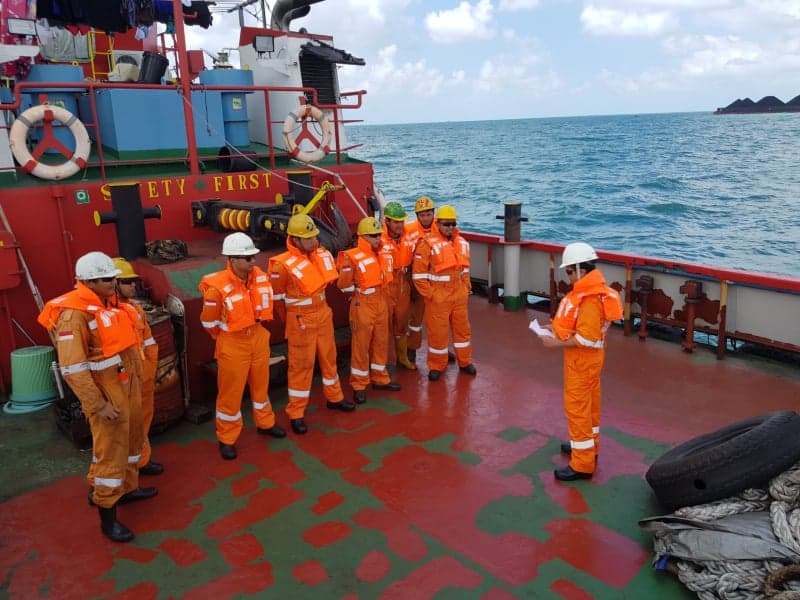
Back on The Amberjack, Captain Reynolds instructed his crew to prepare for the arrival of the scientists. The deck was cleared, and safety protocols were reviewed.
The crew, though accustomed to the unpredictability of the sea, found themselves both anxious and excited about the impending meeting with the specialists.
An Eager Wait
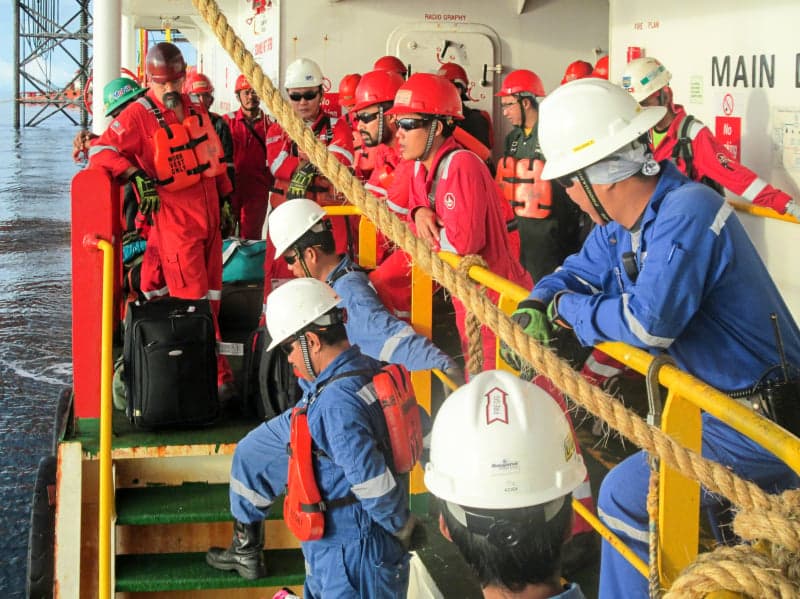
The crew, now busied with preparations, shared speculative glances. “What could that bear be up to?” asked one of the deckhands, while another adjusted his cap, remarking, “Never seen anything like this in my years at sea.”
Captain Reynolds stood at the helm, staring into the icy horizon, waiting for the arrival of the Arctic Explorer, and with it, possibly, some answers.
Exchange of Information

Captain Reynolds, with a sense of urgency, swiftly relayed their precise Arctic Sea coordinates to the approaching Arctic Explorer. “We’re located at 74°35’N, 58°40’W,” he announced, his voice steady yet tinged with urgency.
Every number he articulated felt like a guiding beacon, drawing the expertise of the Arctic Explorer closer to the enigmatic and baffling scene unfolding amidst the icy, desolate waters.
Inquisitive Queries

Dr. Morgan, aboard the Arctic Explorer, inquired with meticulous precision over the radio, “Can you describe the bear’s appearance and condition?” Her voice was clear and focused, cutting through the static.
“Is it exhibiting any signs of physical injury or distress?” she continued, her queries painting a detailed picture of scientific concern, aiming to thoroughly investigate the polar bear’s overall wellbeing and unusual demeanor.
Behavioral Analysis

“Its fur appears healthy, with no visible injuries,” Captain Reynolds reported back carefully.
“However, its actions are extraordinarily peculiar. It keeps standing on its hind legs, lets out loud roars, and persistently paws at our vessel,” he detailed meticulously, hoping his keen observations would assist the scientists in formulating accurate hypotheses about the polar bear’s remarkably extraordinary and unprecedented behavior.
Approaching Rescue

The gap between the two vessels steadily closed as the Arctic Explorer edged closer to The Amberjack. Dr. Morgan and her team of scientists readied their specialized equipment with anticipation, their hearts and minds set on unraveling the mysterious behavior of the polar bear.
The Arctic sea seemed to hold its breath, eagerly anticipating the approaching meeting and the potential revelations it might bring to light.
Anticipation Builds
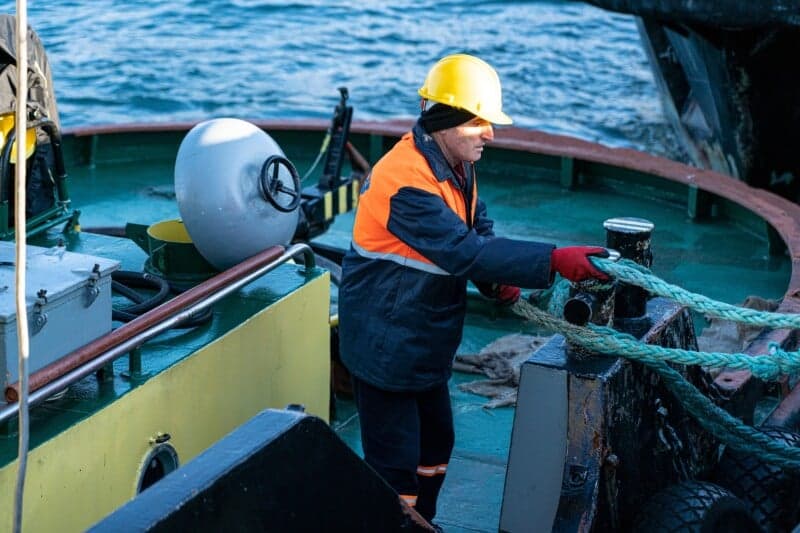
Aboard The Amberjack, the crew briskly prepared to host the arriving scientists with a flurry of activity. They meticulously checked and rechecked all necessary equipment, cleared ample space for the research team, and exchanged speculative and curious glances among themselves.
“Perhaps they’ll finally understand what this enigmatic bear wants,” a deckhand muttered, as a palpable sense of anticipation and curiosity enveloped the air, akin to the cold, lingering Arctic mist.
Arrival of the Experts

The Arctic Explorer docked alongside The Amberjack, and Dr. Morgan, alongside her team of scientists, stepped aboard with a myriad of specialized equipment in tow.
They carried cameras, binoculars, and notebooks, ready to document and analyze the polar bear’s unusual behavior. The crew of The Amberjack watched, a mix of curiosity and respect in their eyes, as these experts began their critical mission.
First Encounter
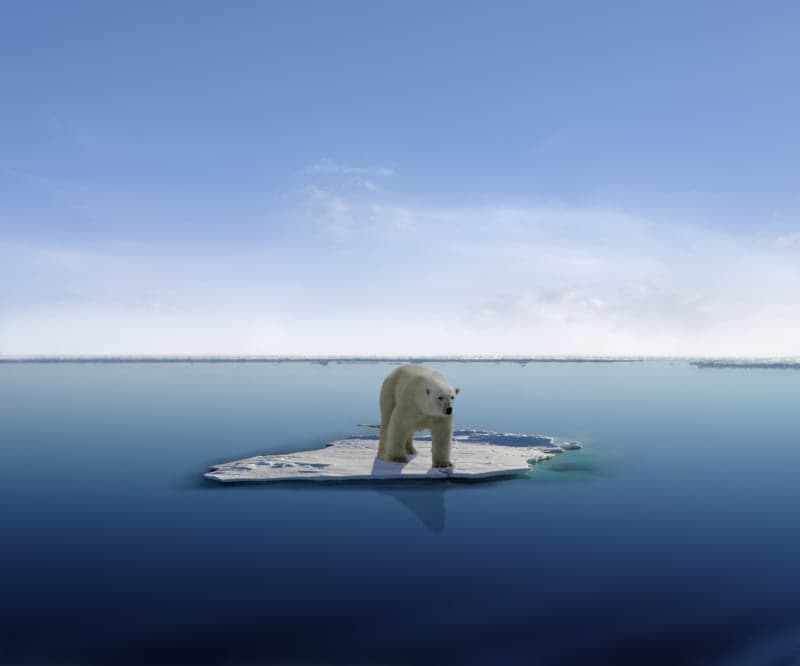
As the team approached the edge of the ship, they caught their first glimpse of the polar bear. It paced restlessly on the floating ice nearby, its white fur stark against the blue of the sea.
The scientists observed quietly, taking in every detail of the bear’s appearance and movements, noting its seemingly agitated state and the intensity in its eyes.
Intrigued Observers

The scientists, with keen interest, began their observation from a safe distance. Dr. Morgan raised her binoculars, studying the bear’s every move.
“Notice its posture and eye contact,” she whispered to her team. They scribbled notes, trying to decode the behavior. The bear’s actions, erratic yet purposeful, seemed to be a form of communication, but the message remained elusive and cryptic.
A Confusing Dance
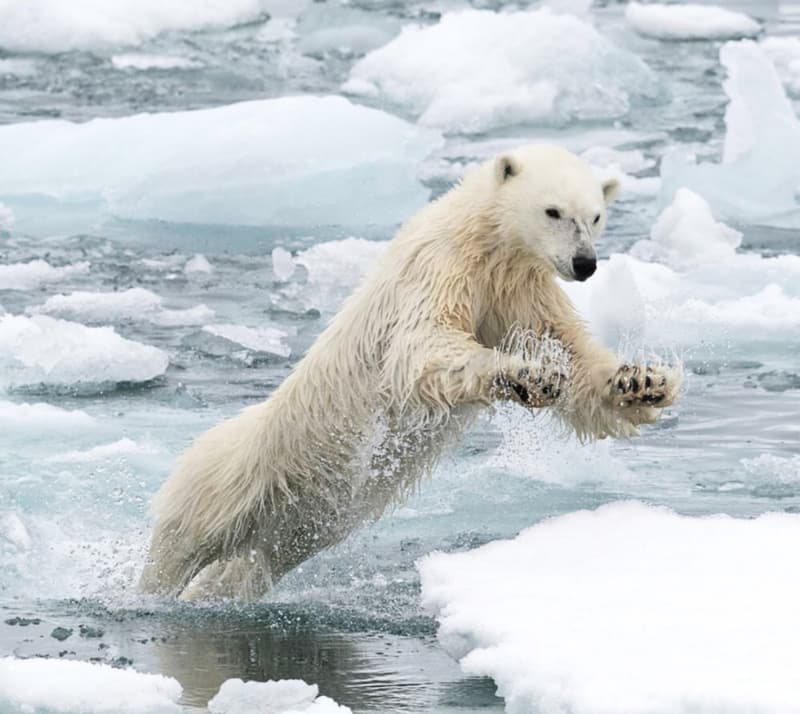
The polar bear, in an unexpected display, started jumping into the water and then clambering back onto the ice, repeating this action several times.
The scientists and crew watched, baffled by this behavior. “Is it playing? Showing distress? Or something else?” murmured one of the researchers. This strange dance of in and out of the icy waters added layers of complexity to the unfolding mystery.
Gathering Data

Equipped with their tools, the experts began meticulously recording the bear’s movements. Dr. Morgan operated a video camera, capturing every detail of the bear’s actions.
The other scientists took notes and discussed possible interpretations of what they were witnessing. “Every movement might be a vital clue,” Dr. Morgan stated, emphasizing the importance of thorough and detailed observation in understanding the bear’s puzzling behavior.
Theories in the Making

Gathered in a semi-circle on the deck, the experts animatedly discussed potential reasons behind the polar bear’s behavior. “Could it be a territory issue, or perhaps a response to environmental changes?” pondered Dr. Morgan.
The team weighed various hypotheses, from stress-induced actions to adaptive behaviors. Each theory was debated with keen interest, yet none seemed to fully encapsulate the bear’s enigmatic actions.
Pointing to the Unknown
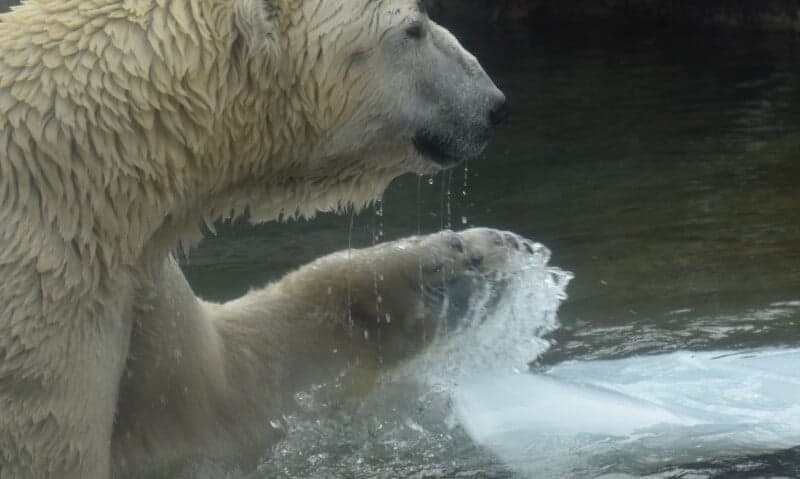
Amidst their observations, the team noticed the bear’s repeated gestures towards a specific direction in the sea. “It keeps looking and pointing there,” observed a young scientist, pointing towards the horizon.
This recurring action sparked a new line of thought among the group. Could the bear be trying to direct their attention to something significant in that particular area of the icy sea?
Analyzing Patterns

The scientists dove deeper into analyzing the bear’s movements, seeking patterns in its behavior. “Notice the frequency of its actions and the direction it faces each time,” Dr.
Morgan instructed, her eyes not leaving the bear. The team meticulously documented these patterns, attempting to decipher a deeper meaning or intent behind the bear’s repetitive and deliberate actions.
Seeking Clues in Behavior

Every movement and sound made by the polar bear was scrutinized with intense focus. The team discussed the significance of its roars, the angle of its gaze, and even the rhythm of its pacing.
“Each action must have a purpose,” Dr. Morgan mused. The crew listened intently, captivated by the idea that the bear’s behavior might hold critical clues to understanding its mysterious conduct.
Puzzling Actions

Despite the team’s best efforts, the polar bear’s repetitive actions continued to confound everyone on board. It seemed to be following a pattern, but its purpose remained an enigma.
“We’re missing a piece of the puzzle,” Dr. Morgan admitted, her frustration evident. The crew and scientists alike shared a sense of bafflement, united in their desire to unravel the mystery of the bear’s persistent and perplexing behavior.
A Mother’s Tale
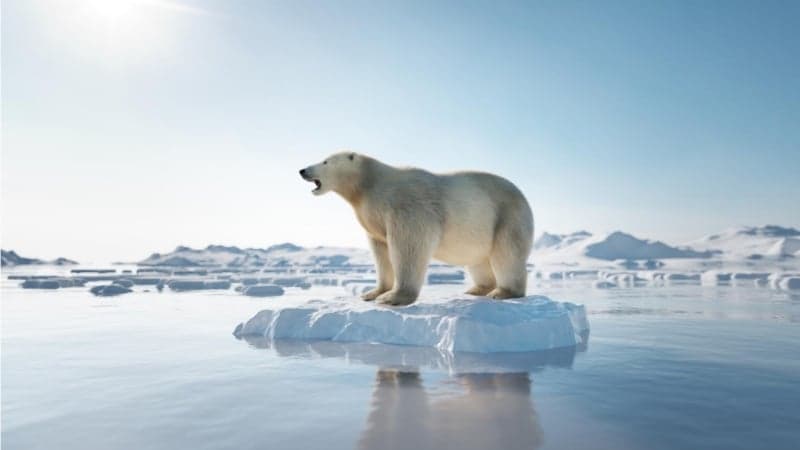
Through their binoculars, the scientists made a pivotal observation: the polar bear was female. “This could be a maternal behavior,” Dr.
Morgan suggested, adjusting her lens for a closer look. The possibility that her actions were driven by a mother’s instinct added a new dimension to their understanding.
The team noted this crucial detail, pondering how it might influence the bear’s mysterious conduct.
Speculating a Tragedy

The discussion turned somber as the scientists considered a tragic possibility. “Could she be distressed over the loss of her cubs?” one researcher voiced out, the words hanging heavy in the Arctic air.
The thought that the bear’s unusual behavior might stem from a deep-seated maternal grief led the team to view her actions through a lens of empathy and concern.
Maternal Instincts

The team gathered around a chart, discussing the potential influence of maternal instincts on the bear’s behavior. “If she’s a mother, her actions could be protective or even a call for help,” another scientist added, deep in thought.
The idea that they were witnessing the manifestations of a mother bear’s instinctual behavior added layers of complexity to their ongoing analysis.
Deepening Mystery

Despite identifying the bear as female and potentially a mother, the precise reason for her distress remained elusive. The scientists continued to observe her, each action now viewed through a maternal lens, yet the answer to why she was acting this way seemed just out of reach.
The mystery only deepened, challenging the team’s expertise and understanding of polar bear behavior.
A New Course

Influenced by the scientists’ insights, Captain Reynolds made a decisive choice. “Let’s follow her lead,” he declared, adjusting the ship’s helm.
The Amberjack slowly changed course, aligning with the direction indicated by the polar bear. This new path, dictated by the bear’s persistent gestures, marked a shift in their journey, guided by the hope of unraveling the mystery at sea.
Navigating Uncertainty
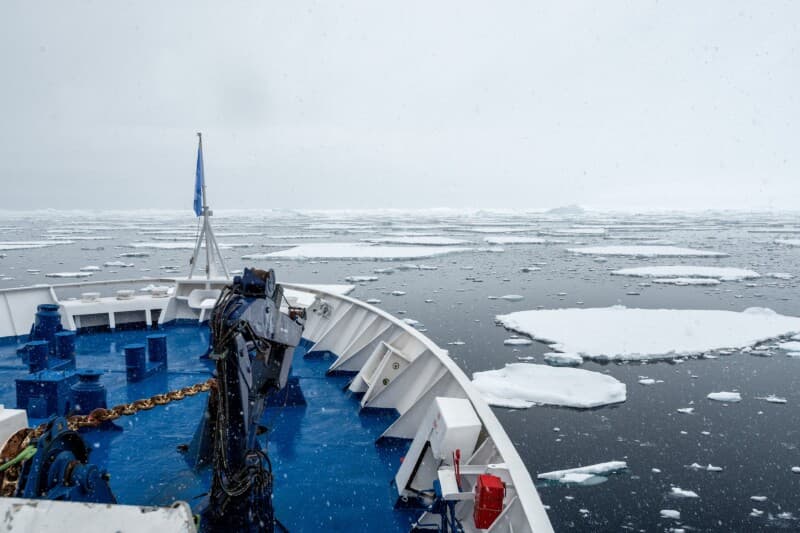
The Amberjack, under Captain Reynolds’ steady command, navigated towards the direction the bear seemed to be indicating. As the ship sliced through the icy waters, a sense of uncertainty permeated the air.
The crew members exchanged glances, silently wondering what they might find in this uncharted path, led by the silent yet compelling guidance of the polar bear.
Trusting Instincts

Embracing the unknown, the crew placed their trust in the bear’s mysterious guidance. “There’s something she’s trying to show us,” one deckhand remarked, gazing towards the horizon with a mix of awe and anticipation.
This leap of faith, based on the instincts of a wild animal, was unorthodox for these seasoned sailors, yet it felt like the only path to follow.
An Uncharted Journey

The Amberjack ventured into less familiar waters, guided by the bear’s silent insistence. The sea around them felt different, more mysterious and unexplored.
Captain Reynolds kept a vigilant eye on the path ahead, aware that they were navigating not just through physical space but also through a puzzle that nature itself had presented to them.
A Guiding Force
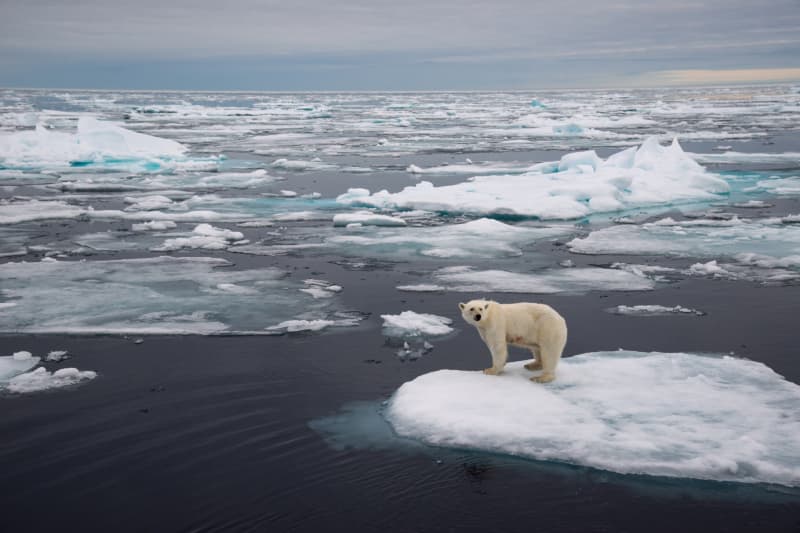
The polar bear, undeterred, continued to lead the way with determination. Her actions were deliberate, reinforcing the crew’s belief that she was guiding them towards something significant.
As the ship followed, the bear occasionally glanced back, as if to ensure they were still in pursuit, her presence commanding yet enigmatic against the vast backdrop of the Arctic.
Heartbreaking Hypothesis

As the day wore on, the team contemplated a heartbreaking hypothesis. “What if her cubs have perished?” one scientist whispered, the sorrow evident in his voice.
This grim possibility cast a shadow over the group, as they considered the profound impact such a loss would have on a mother bear.
The idea was speculative, but it resonated with a sad plausibility among the crew and scientists alike.
Signs of Agitation
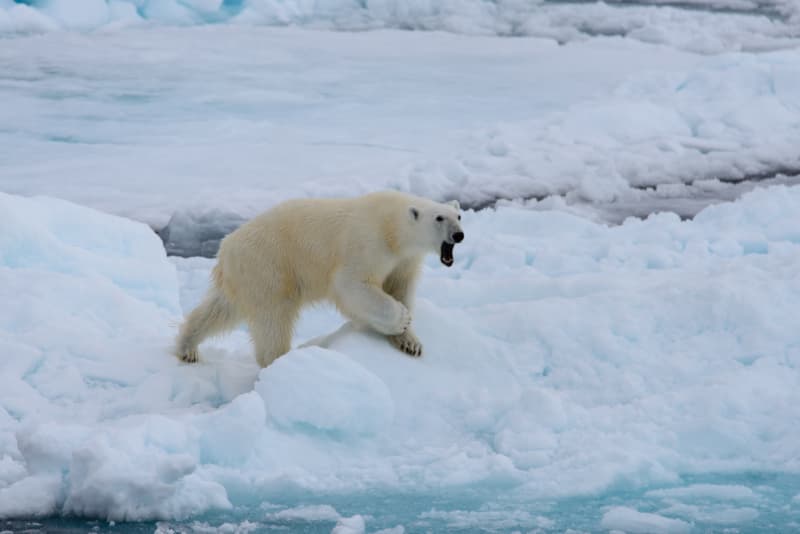
As The Amberjack drew closer to a specific area, the polar bear’s behavior shifted noticeably. It became increasingly restless, pacing more rapidly and letting out frequent, louder roars.
Its agitation was palpable, catching the attention of everyone on board. This change in demeanor suggested they were approaching a significant location, one that held great importance to the bear.
A Shift in Demeanor
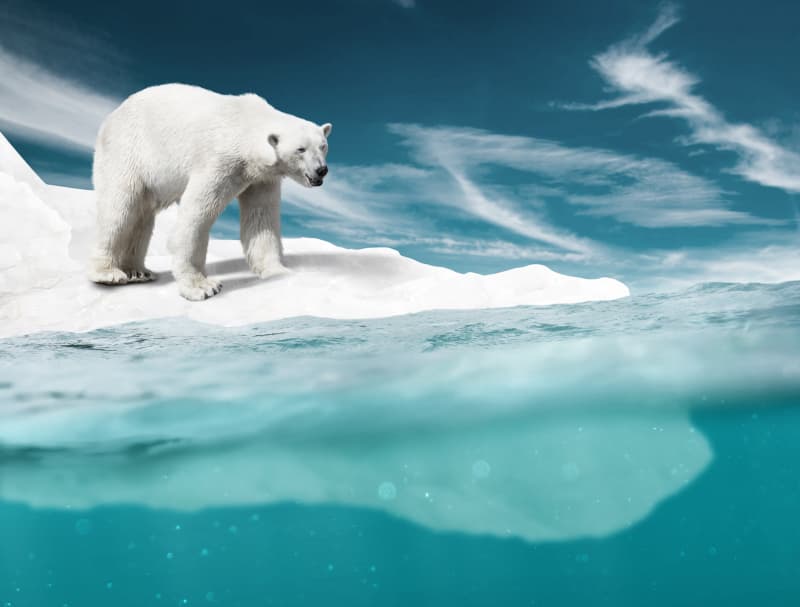
The observers on the ship noted a distinct change in the bear’s behavior. It started making more deliberate movements, its focus intensifying as they neared a particular spot in the icy expanse.
The bear’s altered demeanor hinted at a heightened sense of purpose, as if it was urgently trying to communicate something crucial to the crew and scientists.
Closer to Answers
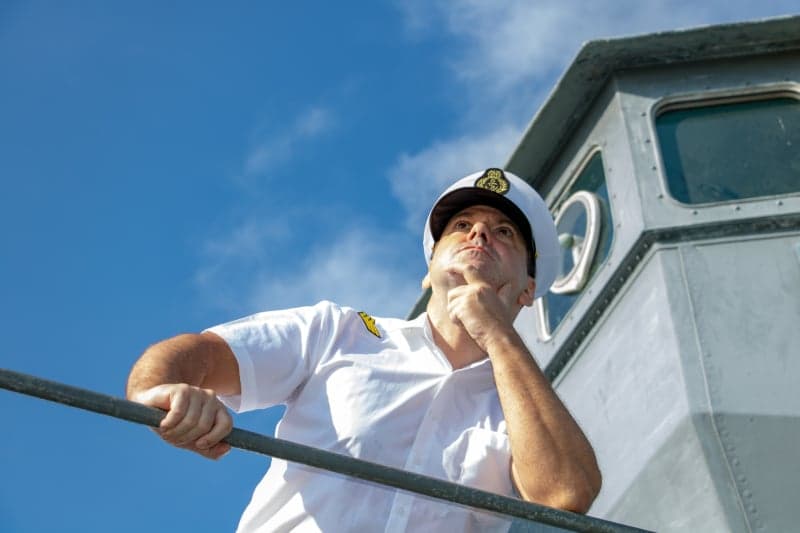
The crew of The Amberjack, guided by the bear’s insistent behavior, felt a growing sense that they were on the verge of uncovering something significant.
The atmosphere aboard the ship was one of subdued excitement and anticipation. They sensed that each meter they traveled brought them closer to the heart of the unfolding Arctic mystery.
Heightened Alertness

A palpable sense of alertness and expectancy gripped everyone on board. Eyes were fixed on the horizon, and breaths were held in anticipation.
The crew and scientists alike stood ready, poised for a discovery. The air was charged with a sense of imminent revelation, as if they were on the brink of understanding the bear’s desperate pleas.
An Imminent Discovery
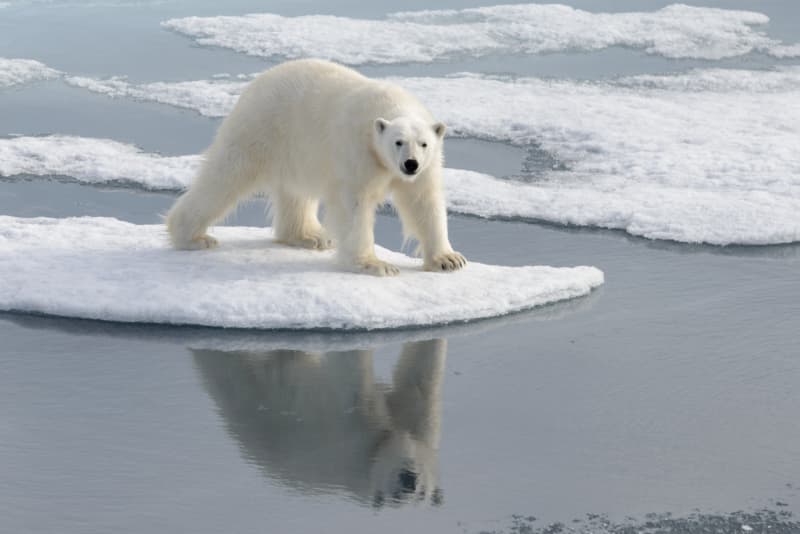
The bear’s increasing urgency and focused actions suggested that they were nearing something crucial. Its behavior seemed to convey a sense of impatience and desperation.
The crew and scientists, following her lead, prepared themselves for what might lie ahead. The sense that they were on the cusp of an important discovery was undeniable and electrifying.
Piecing Together the Puzzle

In the confines of The Amberjack’s cabin, the team huddled over maps and data sheets, meticulously compiling observations. Dr. Morgan coordinated, correlating the bear’s behaviors with their current location.
The crew contributed their insights, each piece of information acting like a fragment of a larger puzzle. Together, they worked to construct a coherent picture from the myriad of collected data and the bear’s enigmatic actions.
Glances and Gestures
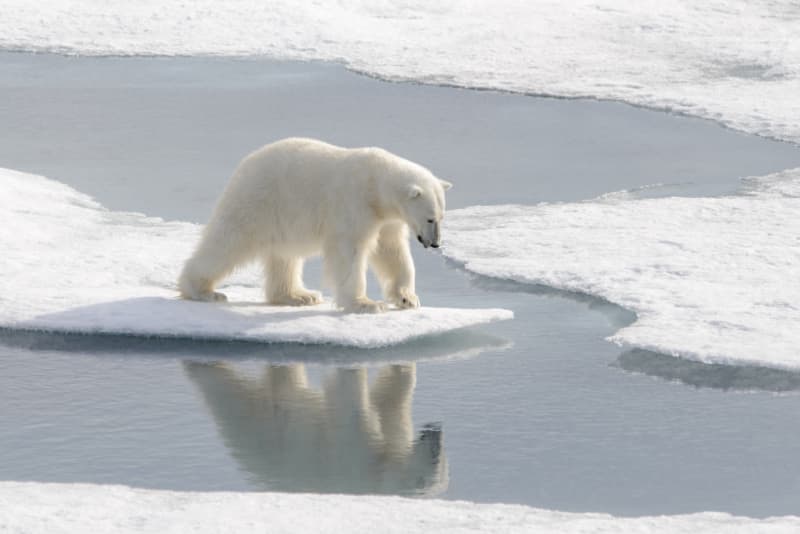
On deck, the team’s attention was drawn to the bear’s consistent glances and gestures. It repeatedly looked towards and pointed at a distant point in the icy landscape.
“It’s as if it’s trying to show us something specific,” one of the scientists mused, noting the direction of the bear’s persistent focus.
These actions were deliberate, adding a vital clue to the unfolding mystery.
Beyond Typical Territory

The direction indicated by the bear led them far from typical polar bear territories. The scientists and crew pondered the significance of this deviation.
“Why would she lead us here?” questioned Captain Reynolds, eyeing the unfamiliar landscape.
This detour into uncharted areas added an intriguing layer to their journey, suggesting that the bear’s intentions were beyond ordinary behavioral patterns.
A Collective Effort

A sense of unity prevailed aboard The Amberjack as the crew and scientists worked in tandem. Discussions were held, theories proposed, and observations shared.
Each member, whether sailor or scientist, contributed their expertise, united by the common goal of deciphering the clues presented by the polar bear and the mysterious path it had led them on.
On the Brink of Understanding

As The Amberjack continued to follow the bear’s cues, a sense of anticipation grew. The team felt they were on the brink of a significant discovery.
Each observation, each pointed gesture of the bear seemed to bring them closer to unraveling the mystery. The air was thick with excitement and curiosity, as the pieces of the puzzle began to fall into place.
A Climatologist’s Insight

In the midst of their discussions, the onboard climatologist shared a crucial insight. “Recent ice drift patterns could explain this,” he suggested.
The theory proposed was that the bear’s cubs were stranded on a drifting slab of ice, having separated from the main pack.
This hypothesis, considering the recent environmental changes, provided a compelling explanation for the bear’s desperate behavior and her persistent guiding of the ship.
A Mother’s Desperation
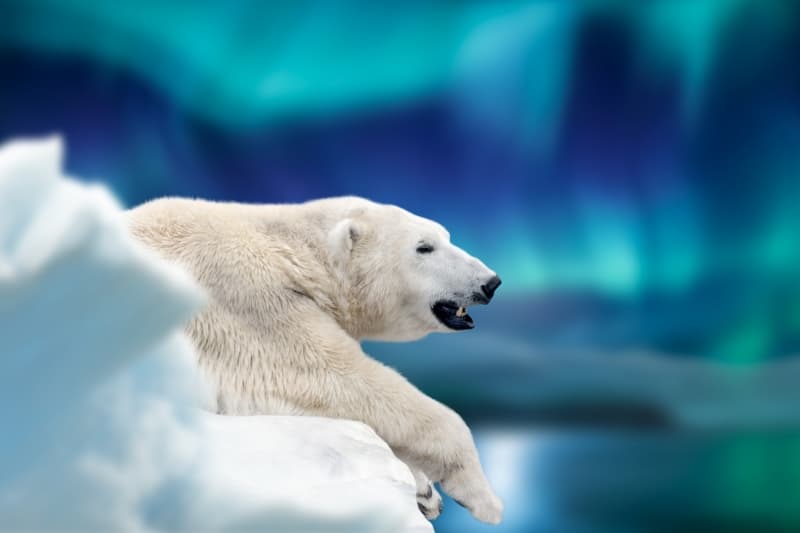
The team contemplated the mother bear’s possible desperation: her cubs in peril, stranded on a drifting ice slab. This scenario aligned with her maternal instincts and the urgency of her actions.
“She’s seeking help,” Dr. Morgan deduced, the realization dawning on everyone. The idea that the bear had turned to humans for assistance in such a dire situation was both remarkable and heart-wrenching.
.Approaching the Truth
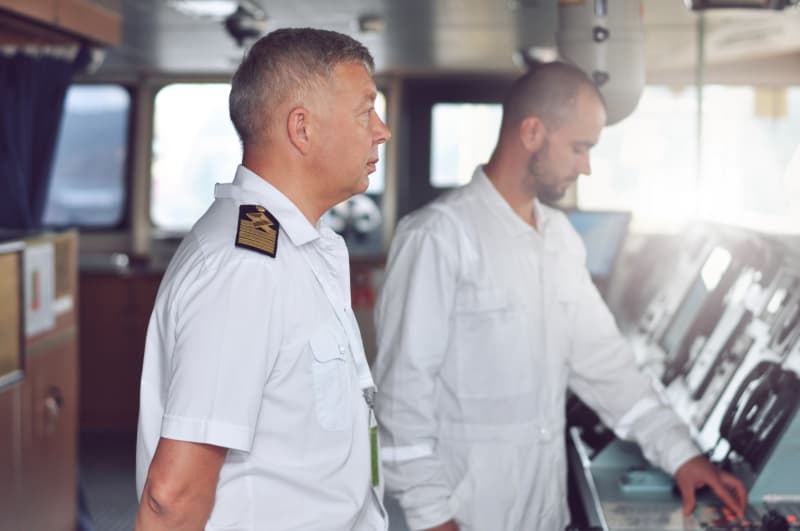
As The Amberjack approached the area the bear had indicated, the atmosphere onboard was charged with anticipation. Crew and scientists alike leaned forward, eyes scanning the horizon.
The possibility that they were about to uncover the truth behind the bear’s actions, and potentially aid in a rescue, heightened the sense of urgency and focus on the ship.
A Glimpse of Hope
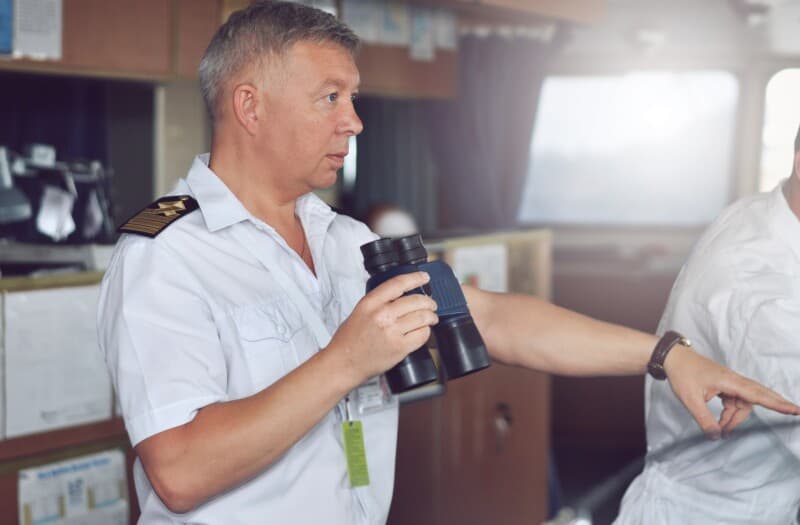
Suddenly, a shout rang out from the lookout. “Movement on the ice ahead!” he exclaimed. Through their binoculars, the team saw a distant slab of ice.
There was unmistakable movement on it, small and subtle, but there. The possibility that these were the bear’s cubs sparked a glimmer of hope among everyone present, reinforcing the urgency of their mission.
The Discovery of Cubs
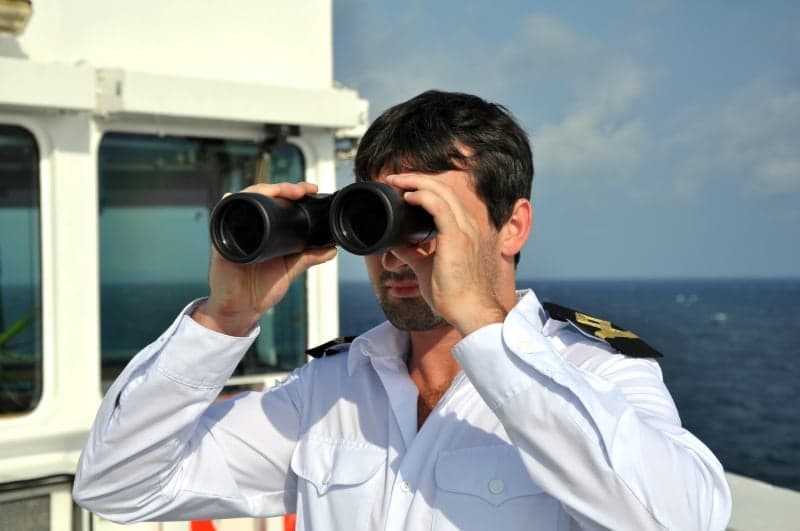
Zooming in with their binoculars, the team’s eyes widened as they made a heartwarming discovery: the polar bear’s cubs were indeed on the slab of drifting ice.
The little ones appeared stranded, confirming the climatologist’s ice drift theory. This revelation brought a sense of validation and urgency; the mother bear’s behavior now made perfect sense, as she had been leading them to save her young.
Rapid Response

Immediately, the crew and scientists convened to formulate a rescue plan. Time was of the essence, and every second counted. Ideas were exchanged rapidly, with Dr. Morgan coordinating the efforts. “We need a careful but swift approach,” she emphasized. The plan involved using the ship’s resources and the expertise of both the crew and the scientists, all determined to save the stranded cubs.
Mother and Raft
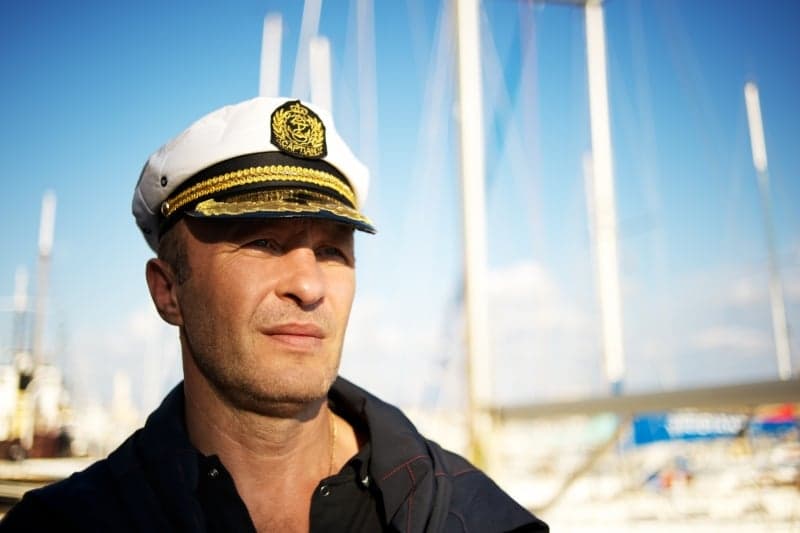
Captain Reynolds had an idea. “Let’s use the raft the mother bear climbed onto,” he suggested. This would allow the mother bear to stay close to her cubs during the rescue. The raft was maneuvered into position, and the mother bear, understanding the plan, positioned herself on it, her eyes fixed on her distant cubs, filled with hope and anxiety.
A Delicate Maneuver

The Amberjack and the Arctic Explorer worked in tandem, carefully maneuvering through the icy waters towards the drifting cubs. The task was delicate; they needed to approach close enough without causing the ice slab to destabilize further. The crew and scientists worked with precision and care, guided by the urgency of the situation and the mother bear’s watchful gaze.
Safe Retrieval

As they neared the ice slab, a rescue team was deployed. With gentle and precise movements, they managed to reach the cubs. The little bears, though frightened, were unharmed. Carefully, the team secured each cub onto the raft. The mother bear, upon seeing her cubs safe, let out a sound that was a mix of a roar and a relieved sigh.
A Joyful Reunion
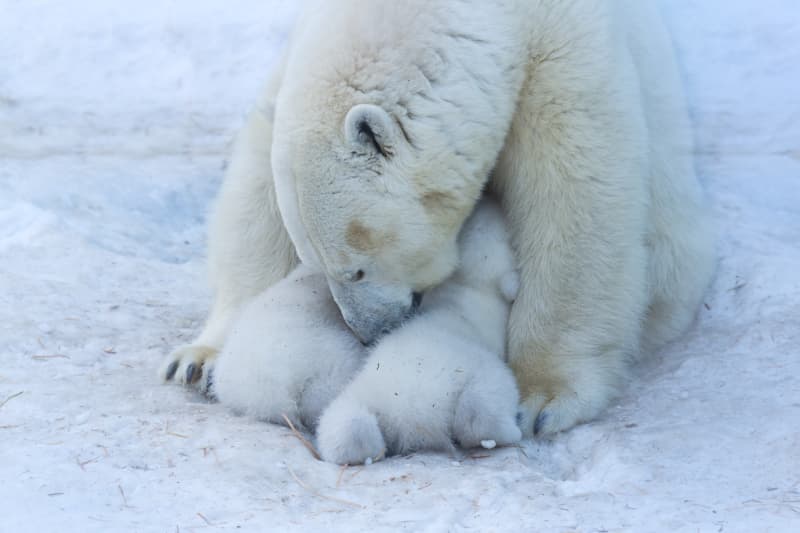
The polar bear family was finally reunited on the raft. The mother bear gently nudged her cubs, checking on them, her demeanor softening with relief. The crew and scientists, witnessing this touching scene, felt a profound sense of accomplishment. Their efforts had not only confirmed the ice drift theory but had also led to a successful rescue, and now they prepared to guide the bear family back to the main pack ice.
The events of this story are entirely fictional and are products of the author’s imagination. Images included are meant for illustration purposes only. Any resemblance to actual events, places or persons, living or dead, are entirely coincidental.